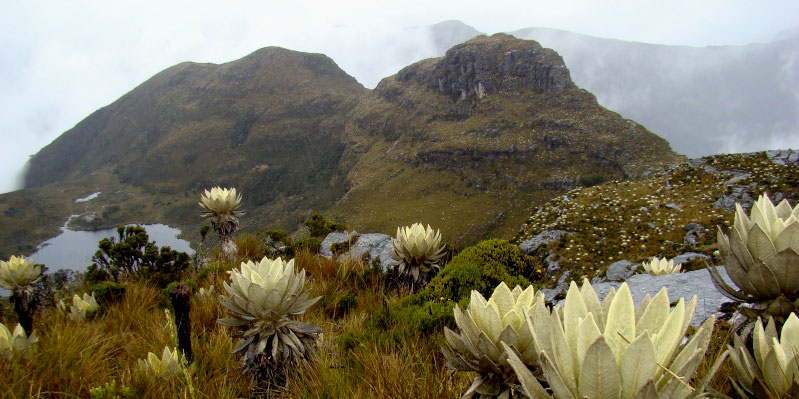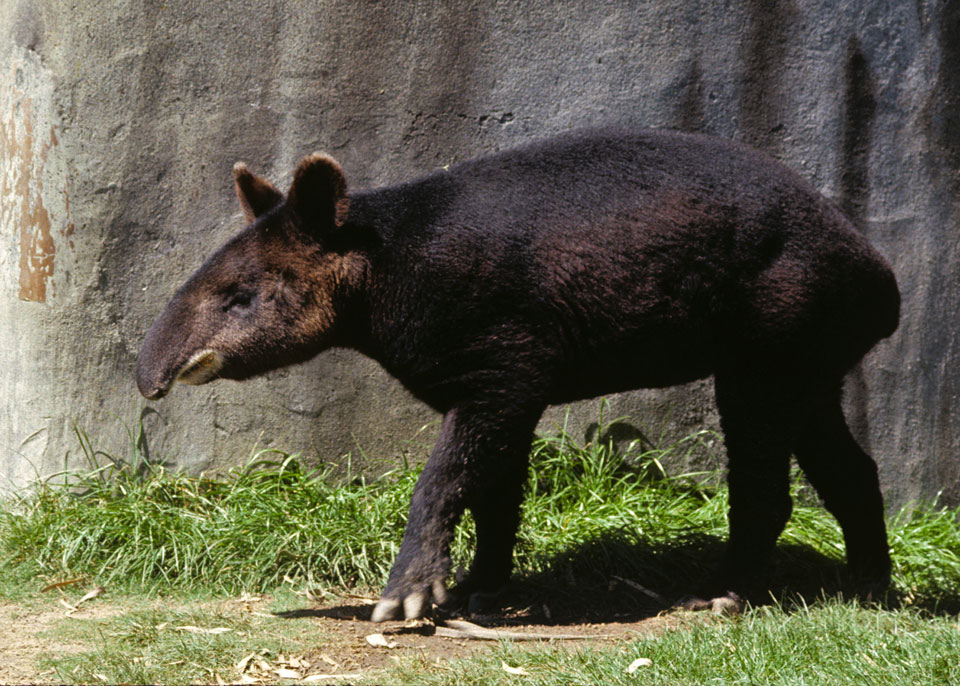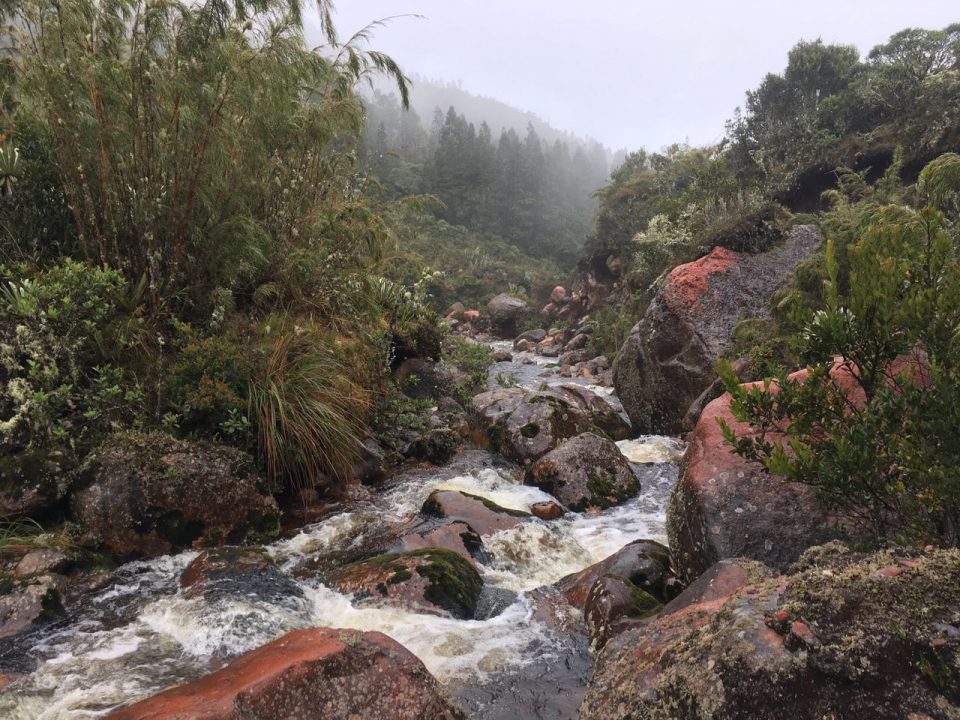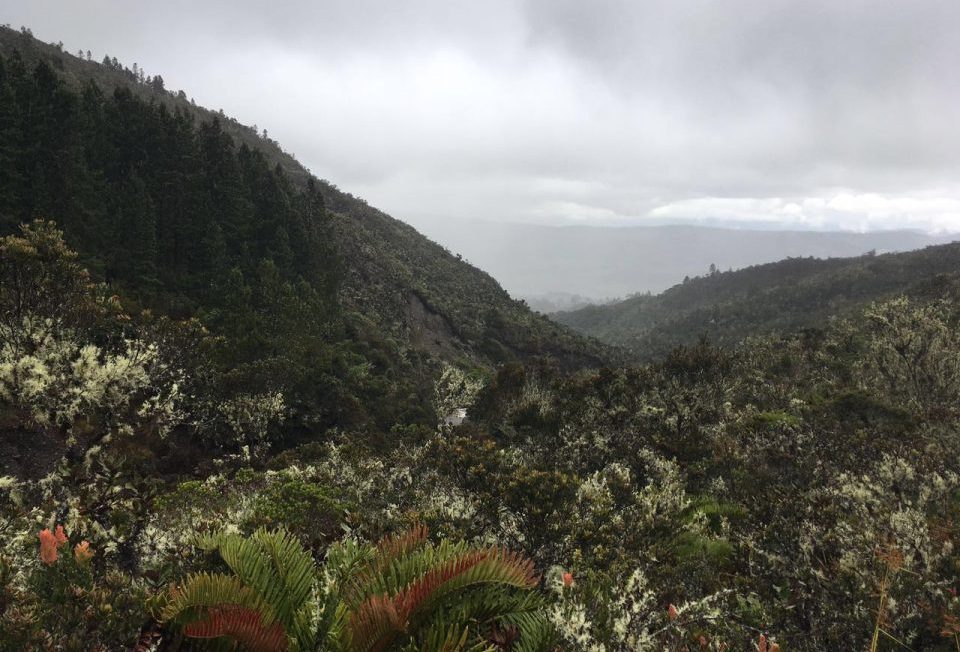
The Sumapaz páramo is the largest in the world and lies at an altitude of between 3,400 – 4,000m.
Sumapaz
Colombia’s páramos don’t just provide the country with water, they are also home to a host of unique species, as Laura Sutcliffe discovers.
“What are páramos?” you may be asking. It can roughly be defined as a high-altitude tropical ecosystem lying above the tree line, yet below the permanent snowline.
Just a stone’s throw from the urban sprawl of Bogotá lies the Sumapaz páramo, a breathtaking landscape that stretches for thousands of hectares.
This type of expansive and largely untouched ecosystem is only found in certain parts of the Andes, and half of the world’s páramos are located in Colombia.
Páramos have been described by geographer and explorer Ernesto Guhl as “a land of liberty in its full sense; a place where man is tested by nature”.
High up on this Andean plateau, this indeed rings true. Temperatures can range from a bitterly cold 2ºC up to 19ºC. In very high altitudes and tropical humidity, páramos create a challenging and harsh environment for flora and fauna to survive.
Yet despite these obstacles, the ecosystem is home to hundreds of species of plants and animals which have adapted to the region’s extreme weather conditions. As a result, many of these species are not found anywhere else on earth.
The Sumapaz páramo is the largest in the world and lies at an altitude of between 3,400 – 4,000m. It was made a national park in 1977 due to its biodiversity and crucial role as one of the country’s main sources of fresh water. The Humboldt Institute estimates that it contains 333,420 hectares of land, of which just under half is protected as national parkland.
Just 23km away from Usme (a localidad of Bogotá), Sumapaz is easily reachable on a day trip and certainly offers an escape from the city’s bustling crowds. So why not spend a Saturday exploring the cloudy and undisturbed heights of a truly unique landscape? Its importance as a source of water for the country and a refuge for flora and fauna that you will struggle to find anywhere else on earth makes it a fascinating place to explore. What’s more, it conveniently lies right here on our doorstep.
You might see…
Here is an insight into some of the rare flora and fauna that you might stumble upon amid the dramatic, peaceful and, at times, desolate landscape.

Frailejón.
Frailejón (or espeletia)
The pride of the páramos, frailejones are a type of perennial bush or shrub belonging to the sunflower family, and are almost totally native to Colombia. This surreal-looking plant, which can measure up to 1.3m in height, has adapted to the bitter environment, demonstrated by its marcescent leaves (retained dead leaves that are normally shed), which help to protect it from the cold. In addition, the frailejón contributes to water sustainability as the hairs on the leaves and its thick spongy trunk trap water vapour from the air and release it through the roots, which in time creates subterranean water deposits that can develop into lakes and rivers, which eventually help to water Bogotá.
El oso de anteojos (the spectacled bear)
Named for the distinctive markings around its chest and face, which often appear masklike around the eyes, this is Colombia’s largest land animal. Sadly, due to hunting and the destruction of their habitat, the endangered spectacled bear’s numbers are estimated to have fallen to a few thousand, making you more likely to find one on a 50 peso coin. A male can weigh up to 200kg and mainly lives on plants such as frailejones.
The Andean condor
The largest bird in the world, condors can be seen soaring over the Sumapaz páramo, scavenging for carrion. With a wingspan of over 3m, they glide through the sky, hardly having to flap their wings. Their plumage is jet black, apart from a thick white headband of feathers around the neck and a bald head, which may change colour and blush whilst communicating with other condors. The open, treeless páramo environment is perfect for them to spot their targets.
La puya
Belonging to the same family as the pineapple, this barbed plant is widespread in the Sumapaz páramo. Its leaves form a rosette which helps the plant maintain heat when it becomes bitterly cold. Some species have spectacularly tall aerial stems, which protect the buds when temperatures plummet during the night.
The puma concolor
If you are exceptionally lucky you may even spy a puma stalking the páramos. The second largest of Colombia’s cats, it is extremely adaptable, and can be found from Canada right down to the southern Andes in Patagonia, Argentina. At home as high as 4,000 metres, the páramo is a fine habitat for this impressive hunter who can jump up to 5.5m and sprint up to 72km/h as it hunts prey such as deer or tapir.

If you are lucky you may catch a glimpse of the Andean Tapir.
The tapir
Tapirs are one of nature’s strangest beasts, like cow-pig-elephants. The páramo’s mountain tapir is the only one to be found outside the tropical rainforests. It has adapted to the cold by evolving a thick woolly coat. They play an important role in seed dispersal, as thanks to their relatively inefficient digestive system, the seeds are able to germinate in their excrement. Unfortunately for them, tapirs are preyed on by both pumas and spectacled bears.
Las turberas (peatlands)
This is the name given for the damp land which extends over large areas of the páramo. The soil is rich and peaty, and the perfect environment for many types of plants that are adapted to wet and marshy conditions. A particularly spectacular plant found here is known as plantas en cojin (or the plants on a cushion). They sit atop the marshes, supported by a soft jelly-like underlayer. Small rosettes of leaves sprout from the plant’s outer branches, leaving the interior consisting of a peaty mass. This provides a reservoir of water and nutrients for the plant. Don’t be deceived however – in spite of the the plant’s soft and spongy appearance, it can withstand the weight of several people.
Hypericums
Recognisable by their green leaves and vivid yellow flowers, hypericums are considered an essential part of the páramo in the north-central Andes. Of the 400+ species of hypericum in the world, a number are endemic to Colombia and the Sumapaz páramo. These hypericums have adapted to the acidic soils, and grow throughout the ecosystem. They are also accustomed to the rapid changes in temperature, high exposure to UV radiation and low availability of organic nutrients. Certain types of hypericum are commonly used as herbal remedies, such as hypericum perforatum – popularly known as St John’s-wort.
How to get there:
The quickest route to Sumapaz is by car, from Bogotá via Usme (about one hour and 45 minutes).
Admission:
Foreign tourists must pay COP$20,000 to gain entry into the park, whilst Colombians pay COP$9,000. Children from 5-12 and students under 26 are charged COP$4,500. Camping is not permitted within the park.

Photo: Anny Wooldridge
Guasca
A protected páramo: Anny Wooldridge hikes Guasca with a man with a vision.
Sumapaz isn’t the only páramo that is within easy reach of Bogotá – there is also the Guasca páramo in Chingaza National Park, around 60km northeast of the city. I recently went on a hike there, guided by Mauricio Restrepo, who is part of a group of people attempting to develop tourism in this area.
You may be wondering, why open it up to tourists if it’s fragile and needs to be preserved?
Well, their aim is not only to show tourists how beautiful the páramo is, but also to educate people on the importance of these precious ecosystems and their conservation.
This ecosystem is unique to the world; it’s home to over 2,000 species of endangered plants, such as the frailejón shrubs, and over eight species of moss, which can absorb over 40 times their weight in water. Many of these species and plants have been around longer than our ancestors: for example, espeletia only grows at a rate of one centimetre per year meaning the larger plants are some thousands of years old.
As one who comes from the English countryside, I’d never even heard of a páramo before, let alone visited one. We went on a four hour hike in the mountainous countryside, through small rocky rivers, stopping every once in a while to take in the beautiful landscape and gaze in awe at the colours and sights that surrounded us.
Mauricio and his co-environmentalists are in the process of creating several camping spots, three trails for hiking or trekking and an area for birdwatching. The planned activities are scheduled to last between three and six hours, which will give visitors the chance to spend a whole day there and really immerse themselves in nature.
Mauricio tells me that he wants to encourage tourists to come and disconnect. He wants them to be able to escape from city life, to breathe the fresh air and discover the undeniable beauty of an undiscovered region.

A view off into the distance.
As we climbed, it was interesting to see the way that the vegetation changed dramatically: the plants have adapted to take in as much water as they can by having furry leaves and the ground is covered in moss making it spongy and soft.
Clouds surrounded us and our clothes became wet through, even though it wasn’t raining. We stopped on a flat area high in the mountain (one of Mauricio’s future camping spots) and sat to take in the view. I could have sat there forever just watching, looking and breathing the fresh, cold, damp air and discovering new plants and a new landscape.
What’s even more amazing is that much of Guasca and the whole nature reserve is yet to be explored and there are likely many species waiting to be discovered.
The part of the Guasca páramo we hiked has a stream running through it and at the very top of the mountain there is a dam. Around 20 years ago this dam collapsed, flooding the river banks and washing large parts of the vegetation away.
Sadly this means that the river bank has sheer drops and large stones have been washed a long way downstream, destroying much of the vegetation in the process.
Other human activities, such as deforestation, mining and infrastructure development have greatly impacted and disturbed the páramos in recent years, which is why they are at the heart of so many current environmental/development debates.
That’s one reason why it’s great to see passionate entrepreneurs and conservationists like Mauricio, who are working towards educating people about the páramos and making them more accessible. Let’s hope it means these precious ecosystems will live on to provide enjoyment and inspiration to many more in the future.
Páramo tours throughout Colombia available with the following companies:
Andes EcoTours: www.andesecotours.com, andesecotours@gmail.com
Bogota & Beyond: www.bogotaandbeyond.com, bogotaandbeyond@gmail.com
Reserva Natural El Zoque: reservaelzoque@gmail.com, (+57) 310 2403489
Awake Travel: www.awake.travel, info@awake.travel, (+57) 3223655135
De Una Colombia: info@deunacolombia.com, (+57 1) 3681915




